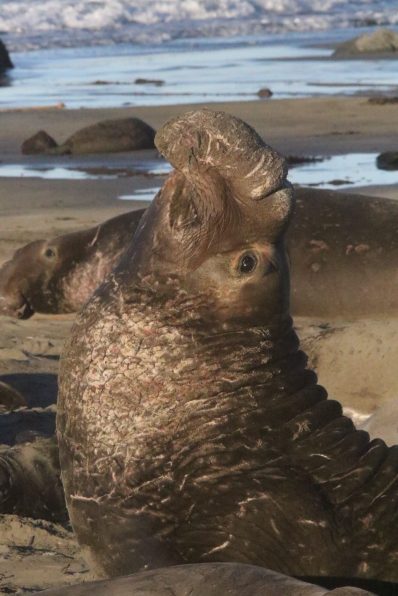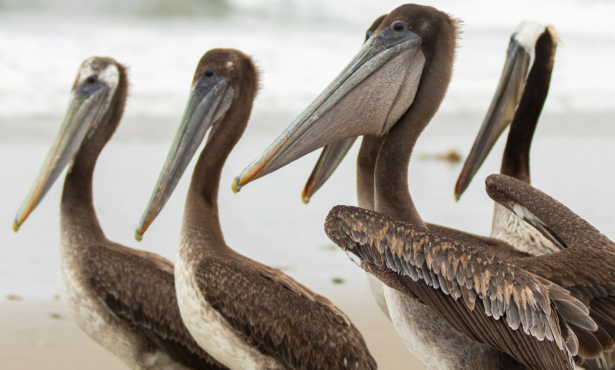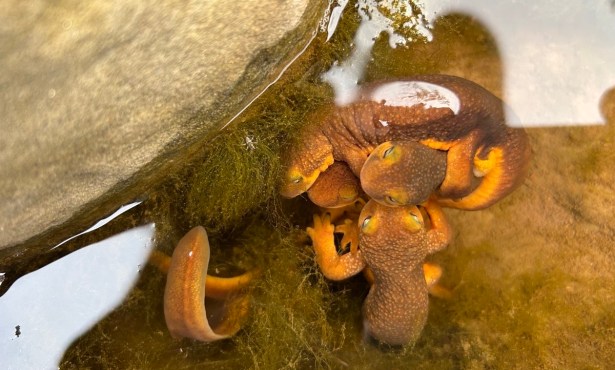San Simeon’s Rookery on the Rise
Pinnipeds Proliferate at Second-Largest Northern Elephant Seal Colony in the World

The two girthy northern elephant seal bulls battled in the frothy shallows along a Central California beach, hacking at each other’s necks. Supremacy, coastal territory, and a fruitful harem were all that was at stake. As they fought on, females with pups scooched away from the fray, giving the bulls all the beach they needed for their colossal standoff.
The larger bull, known as a beachmaster, was 15 feet long and nearly 5,000 pounds and had his flippers full with the younger and smaller but aggressive upstart. As soon as they faced off, other males tried to move in on the beachmaster’s turf. However, it seemed they weren’t as ambitious as the youthful, rotund pinniped charging the beachmaster.
They battled mightily in the surf and on the beach. After 20 minutes of fighting, the beachmaster was finally successful. After chasing the young bull into the cobalt blue waters, there was calm over the rookery, albeit briefly, and finally the beachmaster rested.
“During the breeding season, territorial males are extremely busy fighting for a group of females, defending against conspecifics, breeding, etc.,” said Tony Orr, research fisheries biologist for the National Oceanic Atmospheric Association (NOAA). “Inferior males are frequently sneaking around, trying to get an opportunity to breed.”
Go Long, Go Deep
Although they may not look it, the thousands of pinnipeds wallowing away on windblown beaches north and south of the Piedras Blancas Light Station in San Simeon are one of the most amazing animals on the planet. Northern elephant seals are the second-largest seal in the world and can hold their breath for long periods of time, but it is their mind-boggling migration that sets them apart from most other animals.
It’s estimated that northern elephant seals migrating south from the Bering Strait in Alaska spend 80 percent of that time underwater foraging for food at unfathomable depths. They’re able to do this by shutting off a third of their brain and slowing their heart rate down to three beats per minute. This allows them to stay down for up to 90 minutes and dive deep to at least 5,000 feet. Those dark depths are where they forage for food such as squid and sea cucumbers to sustain themselves on their pelagic journey.
Sign up for Indy Today to receive fresh news from Independent.com, in your inbox, every morning.
“These physiological attributes are correlated with size,” continued Orr, who has studied elephant seals and other pinnipeds at San Miguel Island for more than 20 years. “Elephant seals have even more enhanced physiological capabilities compared to other marine mammals (including their size among pinnipeds), resulting in them [being able] to dive deeper and longer. Shutting down parts of their brain is not unique in elephant seals. Several marine mammals do this. But it is pretty cool, and it allows them to rest while at sea, where they are most of the year.”
Prolific Pinnipeds

It’s been 30 years since the first northern elephant seal pups (also known as weaners) were born south of the Piedras Blancas Light Station. The rookery has evolved from just a few animals in 1990 to now being the second-largest northern elephant seal colony in the world, second only to San Miguel Island.
Approximately 17,000 animals use the surrounding beaches north and south of the lighthouse. In 2020, 6,000 pups were born at the rookery. And to think that all northern elephant seals today proliferated from just a few animals hidden away on Guadalupe Island off Mexico in the late 1800s. Once hunted to near-extinction for the oil extracted from their blubber, they’ve benefited from protections from Mexican and U.S. governments, but especially from the Marine Mammal Protection Act of 1972. Despite their colossal proliferation, the topic of inbreeding occasionally arises.
“I would assume it’s an issue, as their genetic variability would be low,” said Orr. “If something (e.g., disease) attacked them, I would assume that their population would decrease significantly due to the bottleneck effect.”
Nevertheless, for those observing the behavior of thousands of elephant seals on a daily basis, one wouldn’t know such a threat could occur, especially for a species that has fully recovered and continues to establish new rookeries between Central and Northern California.
Support the Santa Barbara Independent through a long-term or a single contribution.




You must be logged in to post a comment.